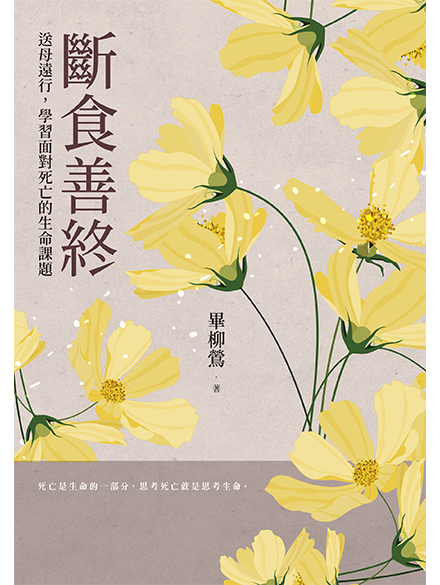Facing an inherited degenerative disorder, the author’s mother chose death with dignity over a life of suffering and extreme disability. This book records this wise and courageous journey, and its impact on the author’s family, confronting vital questions of what it means to live and die well.
Despite knowing her mother’s family history of spinocerebellar ataxia, or SCA, physician Bih Liu-Ing is shocked when her mother begins displaying the telltale symptoms of impaired movements and wobbly gait. A neurodegenerative disorder that causes atrophy of the cerebellum, SCA usually shows by middle-age, so the family had always assumed the fatal gene had bypassed Dr. Bih’s mother. Confirmation of the diagnosis sends shockwaves through the family, laying bare old family wounds, and forcing them all to engage in difficult conversations, ultimately leading to the mother’s decision to choose death with dignity.
Earlier in her career, Dr. Bih had read Japanese physician Nakamura Jinichi’s book on the fasting method of assisted suicide in which the patient reduces their food and water intake until the body can no longer sustain life. As death approaches, the body produces natural endorphins that induce a state of calm. Dehydration eventually leads to unconsciousness, allowing the patient to die a natural and relatively painless death. When the time comes, Dr. Bih introduces the method to her mother, giving her the option to choose the humane death that she desires.
The book opens with the family’s history of SCA, detailing the suffering endured by the author’s uncle and cousins as they gradually succumbed to the disease. The following chapters develop a psychological portrait of the author’s mother, addressing the impacts of growing up in a time when women weren’t valued beyond their role in the home, her cold and distant father, and a marriage that afforded her little dignity. This complete picture of the mother’s life helps to contextualize the loss of personal value she experiences as the disease progresses, and her decision to exit life on her own terms.
The middle chapters detail the mother’s direct experience of the illness, both physically and psychologically. During the early years she slows its progress with rehabilitative exercises, but eventually loses the ability to live independently and care for herself. In parallel, Dr. Bih records her mother’s process of coming to grips with her life and her mortality, releasing her past grievances and traumas so that she and the entire family can prepare for her passing. Details of the fasting process, the emotional responses of each family member, and even the pre-death farewell ceremony are included.
In the final chapters, Dr. Bih follows up with a discussion of end-of-life care in Taiwan, including legislative issues, and comparisons to other countries. The final chapter of the book records the reflections of the entire family once the process is complete, as well as collection of moving reactions from online readers.
Both as a physician and a daughter, Dr. Bih Liu-Ing reflects on her mother’s wisdom and courage in the face of death. This faithful record of carrying out a loved one’s wishes concerning death, and supporting them in their final moments, is enhanced by Dr. Bih’s knowledgeable discussion of the moral and medical issues associated with end-of-life care. Written expressly to prompt readers to contemplate these difficult topics, Farewell My Mother is sure to encourage discussions about what it means to live and die well, while also providing comfort, healing, and practical advice to those already struggling with terminal illnesses in their own families.
